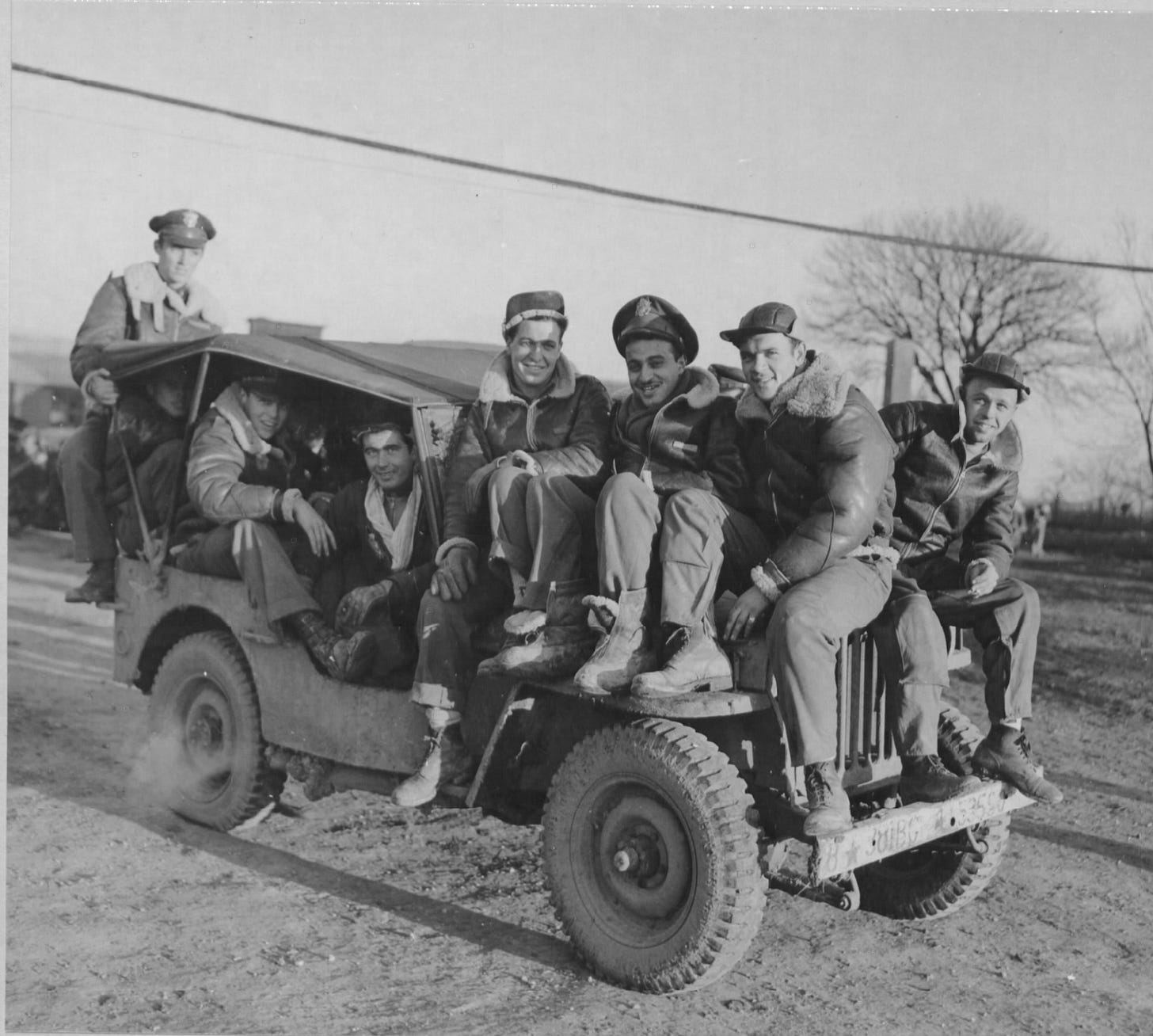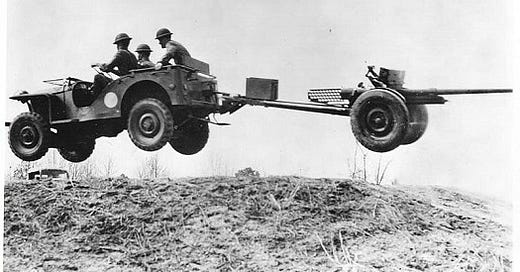Ernie Pyle once said, “It did everything. It went everywhere. Was as faithful as a dog, as strong as a mule, and as agile as a goat. It constantly carried twice what it was designed for and still kept going.” (quote source: Heritage Museums and Gardens)
The Jeep made its debut in the war in early 1940s and went on to prove its worth in its flexibility and utility during World War II. Jeeps, like gliders, arrived to the theater of war by ship, parachute, and glider.It was used in all theaters of war for a myriad of purposes - some intentional and some not.

Both British and American gliders brought the jeep to the battlefield. I was unaware of the modifications made to the jeep for transport in the Horsa until it was brought to my attention. This was a very valid point and I headed down the rabbit hole of research so here you are. This is the first in a short series of a deep dives into the challenges in transporting as well as the uses of the jeep, the bulldozer, the howitzer, mules and motorcycles once they were brought in by glider.
The British had two Horsa designs: the Airspeed As.51 Mark I (MK I), and the As.58 Mk II (Mk II) . The Mk I had a loading door behind the cockpit on the pilot’s side (port) which measured 7.5 feet by 5 feet (James Mrazek). The cargo compartment measured 10.5 feet high by 7.5 feet wide and was 34 feet long (James Mrazek).
As anyone who owns or has owned a jeep knows, many modifications can be made to it. This was the case in the 1940's as well to enable them to be transported in the Horsa.
To load the jeep or equipment into the MK I a sharp right-hand turn would be necessary once the front of the equipment entered the fuselage. Andy's French Military Jeep Site has a wealth of information on jeeps in the war. Under the British 6th Airborne, he lists some of the modification made to the jeep for loading in the Horsa MK I which I have drawn from.
The body of the jeep was 5.1 feet wide. It would fit through the door but the turn into the cargo compartment would be tight. To make loading not only possible but more practical, less time consuming and less strenuous relatively simple changes were made to the jeep. The steering wheel became removable and the left bumper cut shorter. For appearances sake, not utility, both sides of the front bumper were cut to the same size which is evident in photos of the time. While the reasoning behind cutting the bumper is evident, I am not quite clear on why the steering wheel had to be modified. All extraneous attachments such as handles, the footboard as well as, brackets for shovel, pickax and gas can (Jerrycan) attached to the side of the jeep had to be relocated to the front or back of it. (Andy's French Military Jeep Site). In essence it was stripped down to the frame.

Loading into the Mark II was not an issue. The cockpit was modified to resolve the loading issues of the Mk I. It resembled the CG-4A in that the entire cockpit swung open for loading and unloading. However, it should be noted that the pilots were not lifted up and out of harm’s way in the event the jeep or other heavy equipment broke it lashings and was propelled forward because the cockpit swung to the side rather that lifting upwards. For this reason, unlike the CG-4A, the Mk II retained the removable tail section in the event the cockpit could not be swung open. There were also times the CG-4A cockpit could not be opened due to hitting and embankment or other obstruction.
To overcome the unwieldiness of the Mk I loading system and the need for speed upon unloading, it had a detachable tail section which could be blown off with explosives designed for the it. Later the tail was attached to the glider with eight quick release nuts and cables running from the tail into the glider. The nuts would be released, the cable cut and the vehicles could then be driven out the back of the glider. You can see the removed tail sections in photos of the time.
The CG-4A was of a different design. The entrance to the glider was 5'10" therefore backing the jeep into the fuselage with the cockpit raised was not a problem, nor was unloading. In fact, glider pilots were ready to release the latch holding the cockpit down when coming in for a landing in case the load shifted. In the event it did the pulley system attached to the jeep and the cockpit would cause the cockpit to lift the glider out of the way of the exiting jeep. The CG-4A also sat lower to the ground and would tip forward when weight was placed towards the front, such as unloading. It was specifically designed this way under General Hap Arnolds desire to develop a glider in which a jeep could be carried. The perimeter of the cargo carrying area was reinforced for the wheels. As the jeep moved forward to unload it raised the cockpit and pushed the two ramps down so that it could be driven off.
Another modification was made not to the jeep but the gas can. The German jerrycan was superior in design, strength and purpose and a number of them could be loaded onto the jeep in different configurations. Something as seemingly insignificant made a massive difference on the warfront. It just goes to show that sometimes its just the little things . . . .
I have attached a link to a great explanation of the jerrycan which is well worth watching - Jerry Cans: The True Secret Weapon of WWII.
So many factors went into getting the jeep to the battlefield because of its incredible versatility. From transportation to portable communications to rocket launchers and ambulances - you name it the jeep did it! More on that in the upcoming posts.









I think they also started putting small hatchets or axes aboard the Horsas in order to manually separate tails or open hatches in case a hard landing jammed them shut.